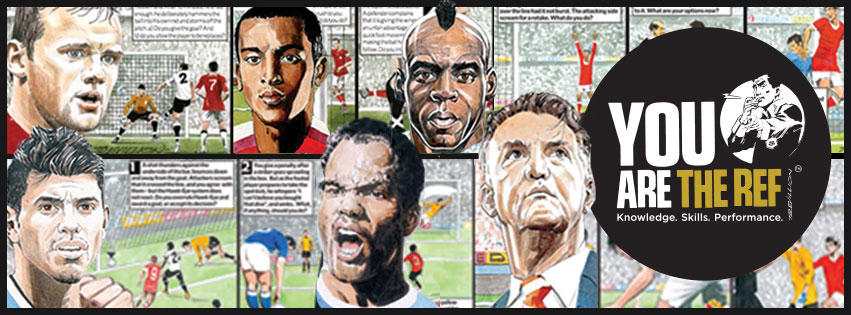Reducing Referees’ Exposure to Error Through Television
World class, long time referee Keith Hackett has worked with famed artist Paul Trevillion on the You Are The Ref for years. With a series of great books and a new website, Hackett is once again sharing his passion and insights on the world of soccer with our readers.
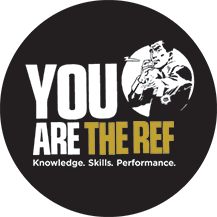
Soccer News: When I took to the soccer field to officiate one of my early Football League televised games in 1975, it was in front of three cameras. One was positioned high up in the stand, one on the perimeter of the field at ground level and the third behind the goal. Martin Tyler, the well-known SKY broadcaster, was holding the microphone that day and I was pleased that he had a sound knowledge of the laws of the game and an understanding of the difficulties facing referees.
I managed to bring my first televised game to a satisfactory conclusion. To my surprise the broadcaster handed me a VHS tape after the game, enabling me to review my performance at home in detail. I gleaned that I needed to be fitter and more mobile. I also was a little surprised with some of my aggressive exchanges between players and certainly needed to review my body language. My approach with players needed to be calmer and less aggressive.
Martin has never changed, and today he is Sky Sports’ number one commentator and world-class in that he has developed a knack of calling incidents with great accuracy over a period of many years. I see him as a true supporter of our role in the game, and like referees, he does not have a second chance when calling a particular piece of play and the names of the players involved.
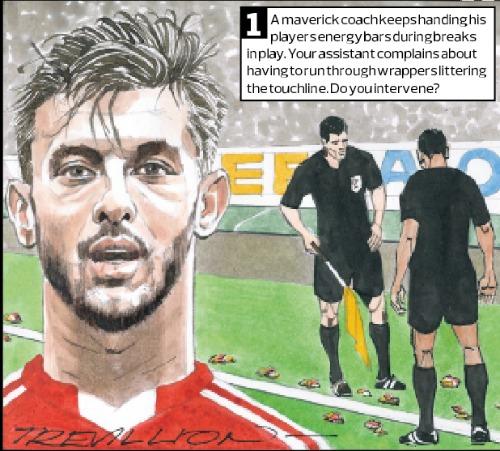 English Premier League games are beamed to over 211 Countries around the world, with the modern referee aware that every move and decision is under the microscope. A minimum of twenty-two cameras ensures that every angle is covered with super slow motion and instant replayable to zoom in and give the audience a view that sometimes is not afforded to the match officials.
English Premier League games are beamed to over 211 Countries around the world, with the modern referee aware that every move and decision is under the microscope. A minimum of twenty-two cameras ensures that every angle is covered with super slow motion and instant replayable to zoom in and give the audience a view that sometimes is not afforded to the match officials.
A complete change from when I officiated games.
I have looked at referee performances over many years with the aid of television footage and the performance analysis tool Prozone. When looking at Refereeing errors, invariably these are due to the referee not securing an appropriate viewing angle or proximity to play. Good teamwork using his Assistant referees and fourth official can sometimes overcome this shortfall.
At the top end of the professional game, UEFA – the governing body of soccer in Europe – came up with the idea of using Additional Assistant Referees (AAR). It was President Michel Platini, a former top French International player, supported by P. L. Collina, at one time the world’s best referee, who turned this idea into reality.
The use of Additional Assistant Referees has proven to be a success in UEFA games in Europe. By being positioned on the goal line, the AAR is able to concentrate on the activity in the Penalty area. A number of crucial decisions have been awarded correctly, thanks to the involvement of these additional officials.
One particular incident that I can recall involved two English officials in a UEFA Champions League game.
Howard Webb was following play out on the left wing looking in that direction when suddenly the ball was kicked into the penalty area with a forward player going down under a challenge. It looked to be a clear penalty kick. However, strong intervention by Mark Clattenburg, another top Premier League referee operating as an AAR, using the communication kit ensured that a foul to the defending team was awarded.
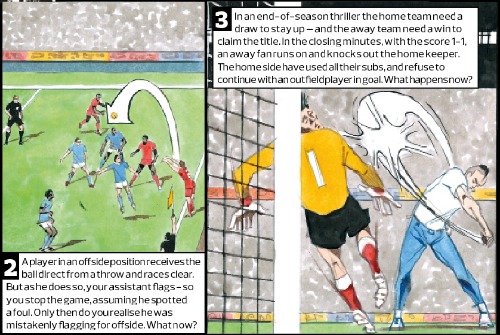
Instant replays by television highlighted terrific teamwork and a close up of the attacker fouling the defender before the ball arrived. This was an excellent and correct decision by Mark, and without the Additional Assistant Referee, it is possible that a wrong decision could have been made. I am sure that those television cameras would have been used to highlight this.
So the AAR has put some balance back into officiating, allowing the team of officials to have the appropriate viewing angle and reducing the referees’ exposure to error through television.
When I was General Manager of the Professional Game Match Officials, the body that selects, appoints and coaches referees, I requested the Premier League to use some of their finances to promote the use of goal-line technology. This is now in use in the Premier League and already proved to be a vital aid towards helping the referee to make accurate decisions for the good of the game. It is my opinion that the time is now appropriate for further investigation to take place to determine if television instant replays can assist the match officials in other areas.
This season in the Premier League we witnessed a player been dismissed by one of our top referees for deliberate handball in the penalty area. But was it so?
Television highlighted that the handball offense was worthy of the award of a penalty kick; however, the denial of an obvious goal had not taken place as the ball was going well past the outside goal post.
This offense at most warranted a yellow card for unsporting behavior. So the red card was incorrect, and the referee had gotten it wrong. Then to the amazement of those watching, television further highlighted that the referee had sent off a player who had not committed any offense.
This incident and others over this season have now convinced me that there are situations in the game when the play is stopped that television could be used by a video referee, as seen in other sports, to help the referee in his decision making process.
What are your views about the use of instant replays to assist the decision making process?

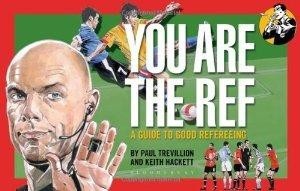 Keith Hackett is a world class ref and the author of You Are the Ref, the Ultimate Illustrated Guide to the Laws of Football and the new book, You Are the Umpire. The books are available on Amazon.com. The amazing illustrations are by Paul Trevillion.
Keith Hackett is a world class ref and the author of You Are the Ref, the Ultimate Illustrated Guide to the Laws of Football and the new book, You Are the Umpire. The books are available on Amazon.com. The amazing illustrations are by Paul Trevillion.
You Are The Ref is a cult classic comic strip in England. SoccerToday is thrilled to bring this to our American soccer audience and share these stunning portraits of soccer stars from all eras. For anyone who has ever questioned a ref’s eyesight or grappled with a clearly ‘wrong’ call, now it is your turn!
According to David James, “Anyone who loves the game knows You Are The Ref. Paul Trevillion’s brilliant art has been around for generations!”
Any opinions expressed in this column shall not be construed as advice on Laws of the Game, and may not represent the official position of US Soccer, the United States Soccer Federation (USSF), CalSouth, the Presidio League, or any affiliates thereof unless specified with appropriate attribution.
